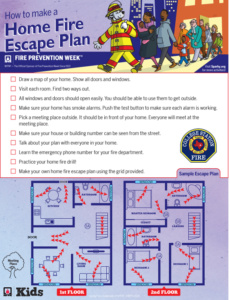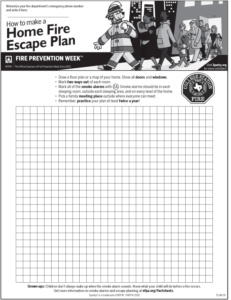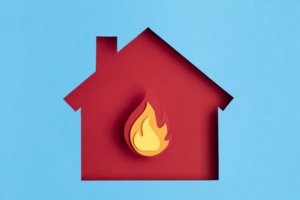Every Second Counts in a House Fire
The College Station Fire Department encourages
families to create and practice an escape plan.
Article+Photos courtesy of | Stuart Marrs, CSFD Public Information Officer
“House fires are burning hotter and faster than ever before,” says CSFD Fire Marshal Eric Dotson. “The smoke produced in a house fire is not the same as a campfire. House fires produce deadly toxins, so getting outside quickly is key to survival.”
The synthetic materials in our homes – mostly in furniture and finishings – burn fast and produce thick smoke. Creating and practicing a home escape plan is the best way to increase your chances of surviving a house fire. The National Fire Protection Association recommends the following steps:
Create the plan.
- Pull everyone together and walk through your home to test all possible exits and escape routes. Check to make sure the escape routes are clear, and doors and windows can be opened easily.
- Older children can draw a floor plan of your home, marking two ways out of each room, including windows and doors. Also, mark the location of each smoke alarm.
- Choose an outside meeting place (neighbor’s porch, a light post, mailbox, or stop sign) a safe distance in front of your home where everyone can meet after they’ve escaped. Make sure to mark the location of the meeting place on your escape floor plan.
- Have everyone memorize the home address and make sure the address is clearly marked on the house.
- If there are infants, older adults, or family members with mobility limitations, make sure that someone is assigned to assist them in the event of an emergency. Assign a backup person in case the designee is not home during the emergency.
- Closing doors before you go to bed will help keep deadly smoke out of your bedroom. Closing doors on your way out slows the spread of fire, giving you more time to escape safely.
- Once you’re out, stay out! Under no circumstances should you ever go back into a burning building. If someone is missing, inform the fire department dispatcher when you call 9-1-1. Firefighters have the skills and equipment to perform rescues.
Practice the plan.

- Once your plan is created, run a drill twice a year.
- Install smoke alarms in every sleeping room, outside each sleeping area, and on every level of the home. Conduct a night-time fire drill to determine if smoke alarms will wake every family member. Warn children that there will be a drill so they can practice escaping without being frightened.
- Tell guests or visitors to your home about your family’s fire escape plan. When staying overnight at other people’s homes, ask about their escape plan. If they don’t have a plan in place, offer to help them make one. This is especially important when children are permitted to attend sleepovers at friends’ homes.

“We do fire drills at our schools and workplaces,” says Fire Marshal Dotson, “But practicing fire drills at home, especially at night, drastically increases your chance of survival in a house fire.”
Creating and practicing your fire escape plan is the best way to survive when every second counts!
At the College Station Fire Department, CSFD stands for Compassion, Service, Focus, and Dedication. For more information about the fire department, visit cstx.gov/fire and follow us on social media @cstxfire. For more information about escape plans and fire safety, visit NFPA.org.
